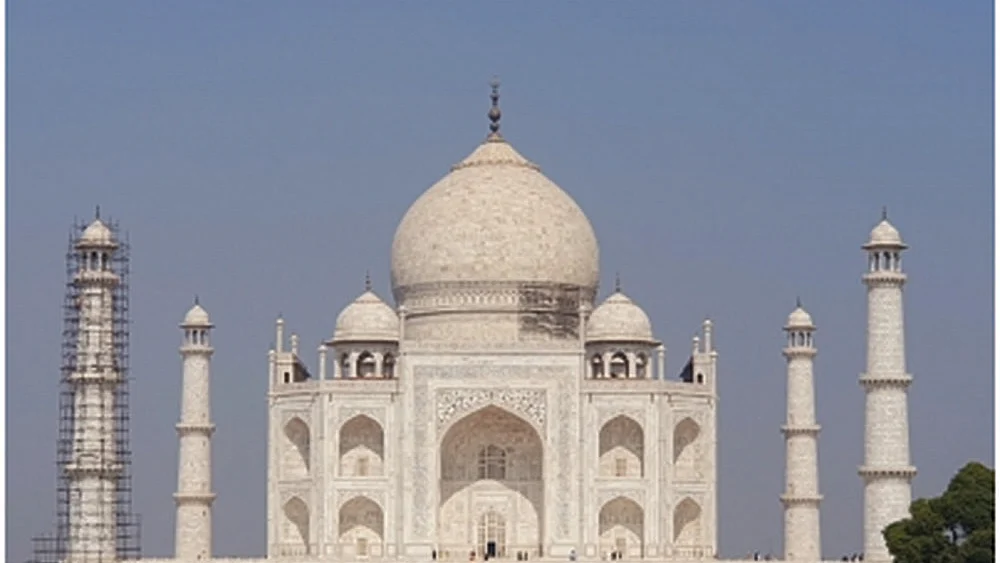Rediscovering Agra beyond Taj Mahal
What other attractions could delight visitors to #Agra, in addition to the 17th century monument of love, the Taj Mahal? There are many more things to see and do in this city

What other attractions could delight visitors to Agra, in addition to the 17th century monument of love, the Taj Mahal?
We set out early, in a battery-operated old-fashioned rickshaw, to experiment with a "fast-food type heritage yatra through the old city of Agra, which still lives in three different zones of history: the Hindu Agra, the Muslim Agra and the Christian Agra. Our aim was to soak in the unique flavours of the city that has evolved over eight centuries and more.
We started from the Etmauddaula view point park where a daily Aarti of the Yamuna river is held, close to the Taj View Apartment complex on Yamuna Kinara road, from where you can see not only the river Yamuna but also five grand Mughal monuments. Our first halt was the old Chungi, the library of Mughal emperor Shah Jahan's son Dara Shikoh. It is a structure worth seeing, particularly the reading rooms which have the provision of filtered sunlight and fresh air.
Old records say Dara Shikoh was a great Sanskrit and Persian scholar, very fond of books. This building also served as a rallying point for political activists during the freedom struggle.
Meandering through the narrow lanes of Belanganj area, famous for its traditional eating joints, and the famous 300 year old Bhagat Halwai chain that has moved to newer colonies, took a look at the almost four centuries old Sri Mathuradheesh temple of the Vaishnav Ballabhacharya sect. Our next stop was Huzuri Bhavan, the headquarters of a sect of the Radhasoamis, which is a philosophical organisation.
Our next stop was Athe haveli in the Kala Mahal area where the doyen of Urdu poetry Mirza Ghalib was born. Now it is a girls' intermediate college. The road running parallel, Mal Ka Bazar connecting Sev Ka Bazar and the Fountain area, is notoriously famous for the high balconies occupied by painted sex workers whose lewd accosting of customers raise eyebrows.
"People are missing the 'mohalla' (neighbourhood) culture, the aroma of sweet shops, images of people engaged in doing odd jobs," quipped Devashish Bhattacharya.
***
We also had a look at the Mankameshwar temple complex before moving towards Jama Masjid and Johri Bazar. With half a dozen temples around the main Shiva temple, the area was once the nerve-centre of the city.

"The feel is rich and as one meanders through the bylanes, it's difficult not to cough and sneeze because the area is also the wholesale market for chemicals and spices. The high balconies still retain the old world charm. Johri Bazar and Kinari Bazar still retain the authentic oriental flavour.
Through Lohar Gali, the poorly lit and suffocating cosmetics market, which was just beginning to wake up, we touched the outer periphery of the Agra Fort station, the only railway station in the world close to two world heritage monuments -- the Taj Mahal and the Agra Fort.
Next we stopped over at the century-old famous Chimman Poori wala shop before heading to Seth Gali, a popular lane with a dozen halwais, and chaat shops. "Due to Shraddha Paksh, the halwais are busy making Imartis and Malpua, for feasting the pandits," said Jugal Kishor pandit, who was accompanying us.
We were now closing in towards the main Petha-making hub at Noori Darwaza and Gur ki Mandi. More than 100 units continue to make the popular Petha of Agra.
The rickshaw by now was slowing down as schoolchildren, sweepers and vegetable vendors were now out on the streets.
Our trip ended at Akbar's church in St Peter's College complex but before that Padmini suggested we should also take a look at the oldest convent in Asia at St Patrick's Junior College, founded in 1842 by six sisters of the CJM. The Archbishop's house and the famous cathedral in the neighbourhood are other major attractions. The area from Ghatiya Azam to Wazirpura is dotted by more than half a dozen Catholic institutions, providing quality education to more than 20,000 students.
Surendra Sharma, president of the Braj Mandal Heritage Conservation Society, lamented, "Sadly, heritage has come to be associated with only stones and structures. Culture, literary traditions, the conventional industries, the traditional media and lifestyles of people have been forgotten.”
Follow us on: Facebook, Twitter, Google News, Instagram
Join our official telegram channel (@nationalherald) and stay updated with the latest headlines
